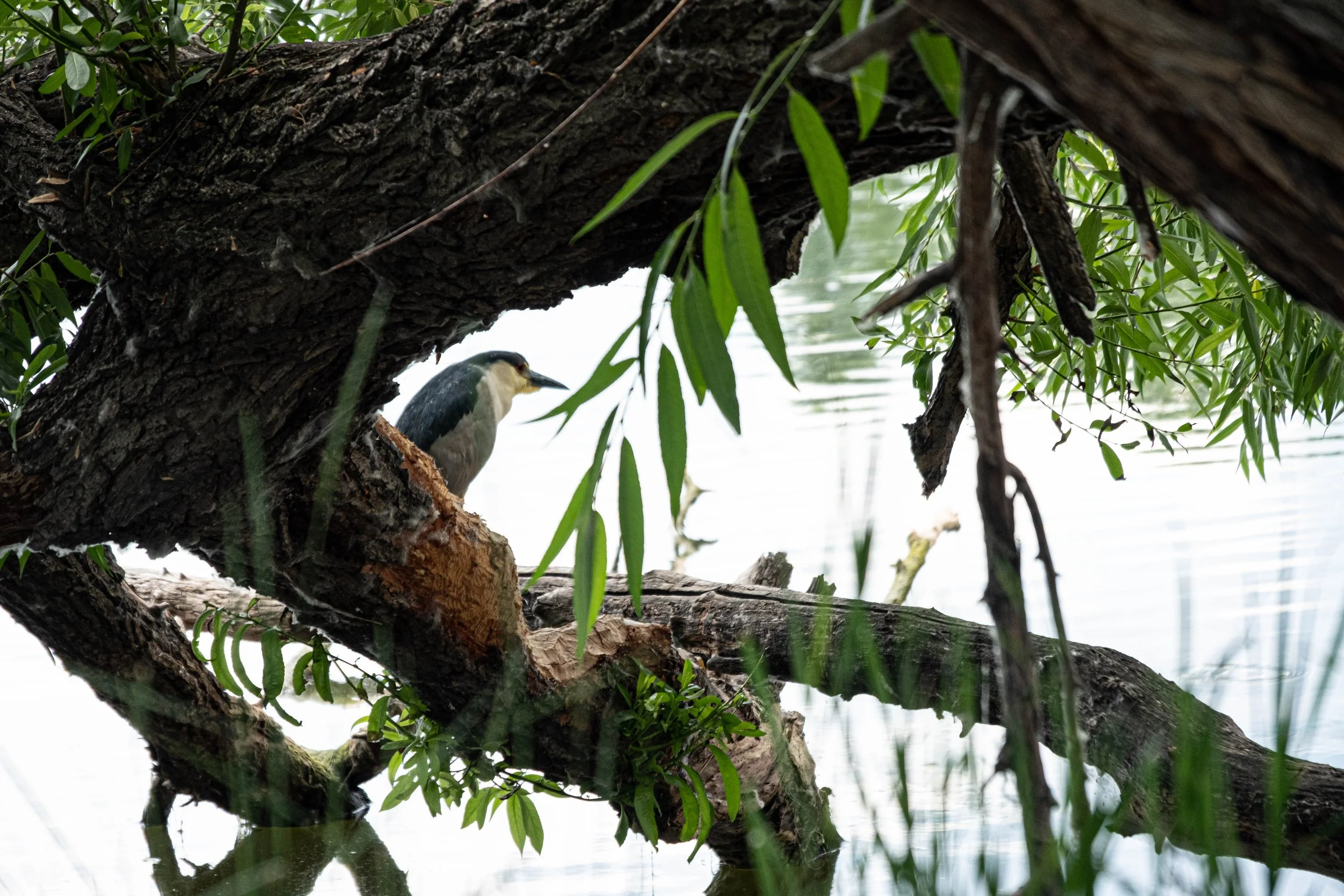Wrestling for Wetlands in the West
23 April 2023
The discussion of water in the western US largely focuses on the water rights and dwindling flow of the Colorado River watershed. However, the growing population of Eastern Colorado and the impact on water use and quality continue to be of concern around the South Platte River and Denver Metro basin on the opposite side of the Rockies.
Water flows from the headwaters at Summit Lake on Mt Blue Sky, down through the foothills into Bear Creek Lake Park in the city of Lakewood, just west of Denver. The dam construction for this lake began in 1977 by the US Army Corps of Engineers as a way to mitigate flooding. The surrounding area was soon established as Bear Creek Lake Park which covers 2,624 acres of wetland and riparian area.
The constant stress on water from drought and water use has put wetlands like those around Bear Creek Lake Park in danger. As of 2021, the Bear Creek Lake Reservoir was proposed to be converted to water storage for the Denver Metro area, increasing its 2,000 acre-feet carrying capacity to nearly 20,000. This expansion would cause nearly 500 acres of wetlands, riparian zones, cottonwood forests, and trails to be submerged, raising the reservoir’s surface elevation by 53’. The new volume of water would also, ironically, pose a concerning flood risk for nearby residents.
Wetlands and riparian areas provide many ecosystem services such as filtering water, storing carbon, mitigating floods, reducing erosion, and slowing run-off. Additionally, these ecosystems support a wide variety of vegetation and wildlife. They are a haven for pollinators and provide prime habitats for roosting migratory birds and nurseries for amphibians. Parks like these also bring joy, beauty, and recreational space to the residents, who are empowered with the potential to protect them.
On October 24, 2021, a Public Scope meeting was held by the Colorado Water Conservation Board, to survey Lakewood residents on their thoughts about the expansion. Many residents stood up to defend the ecological services of the park, including Douglas Andersen, a resident of Lakewood for 30 years who discussed the cottonwoods in the area that would be submerged, which are important for migratory and predatory bird nesting.
The park is an oasis for birdwatchers, observing birds such as bald eagles, yellow-billed cuckoos, and rare sightings of the pacific wren, red-necked grebe, and pacific loon. Evergreen Audubon is formally in opposition to this expansion, providing a long list of uncommon birds seen at the park and the importance of the space for bird habitat.
The National Audubon Society reports there are at least 220 observed species of birds, 153 of which are migrating from the neotropics and at least 95 species use this area for breeding. The cottonwood trees, many of which would be removed upon the reservoir expansion, are the perfect nesting sites for raptors, including great horned owls and ferruginous hawks —the latter, a state species of concern.
After the rallying residents pushed back in public scope meetings, the city of Lakewood submitted its own unanimous proclamation of support for the Save Bear Creek Lake Park (SBCLP) movement on April 25, 2022. As for the next step, the US Army Corps of Engineers is working with Brown and Caldwell Engineers to determine the potential value or harm of expanding water storage in a feasibility study. The next public scoping meeting will be held Spring 2023, but residents are still patiently waiting to be notified of the date.
Beyond the detrimental ecological impact, the question remains whether converting Bear Creek Lake for increased water storage is even necessary to solve our growing water crisis. Would it not be more prudent to better steward the water we already use?
A study published by the American Society for Civil Engineers in December 2022 argues that a growing population does not always require more water. Their study revealed that over twenty years, through city-implemented adaptive water management techniques and trends in the more severely impacted Colorado River Basin, more than half of the cities were able to keep up with water demands and exceed water conservation goals.
East of Denver, in Aurora, incentives for water conservation have helped residents reduce water use by 36% since the early 2000s through the use of water assessments, financial assistance, water-wise landscaping, and smart toilets. Recycling water through the Prairie Waters project has created a sustainable water system, delivering up to 10 million gallons of water a day. Prairie Waters has just been awarded a federal grant that will allow them to double recycling efforts, and expand. Let’s hope these municipal efforts trickle into Denver.
In her public statement to the City Council on February 27, 2023, SBCLP founder Katie Gill states, “We continue to believe opposing a large reallocation of Bear Creek Lake is an ethical and informed position, despite the current water crisis.”
For those of us who support the SBCLP initiative, we continue to hope for strong consideration of environmental justice and ecosystem services in this feasibility study. In addition to keeping an eye on local development and policy-making, focus groups and public scope meetings are excellent ways for people to get involved in wetland and water conservation.



